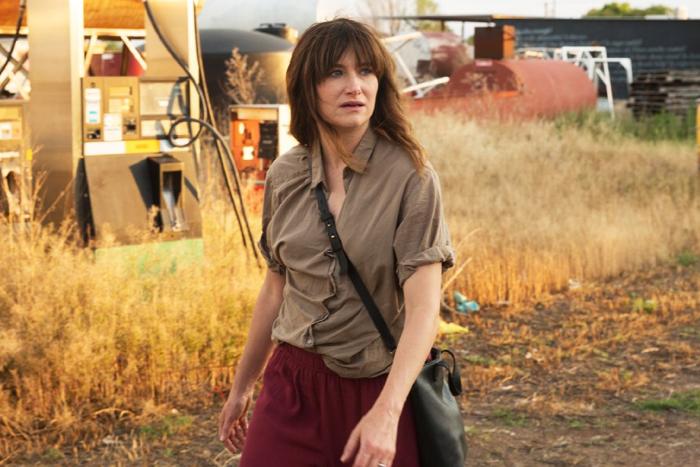Paint the Corners is a monthly column about baseball.
The Miami Marlins started the season on the road, losing two of three to the Washington Nationals and winning two of three against the New York Mets, and didn’t return to the ostentatiously outfitted airplane hangar known as Marlins Park until April 11. Amid their home stadium’s massive glass façade, state-of-the-art retractable roof, nightclub, swimming pool, bulletproof tropical fish tank backstops, and Day-Glo mechanized home run sculpture, the perennially marginal Marlins played a humble baseball game against an even humbler opponent, the Atlanta Braves.
The Marlins always have a few exciting young players on their roster, which is led by arch-tater-masher Giancarlo Stanton, but as their circus-like home conveys, the game itself is often the least interesting thing about this team. For the past few seasons there has tended to be some significant storyline buzzing at the outer field of vision when they play, some high-stakes uncertainty or emotional challenge that makes them a fascinating franchise to follow even when their games inevitably stop mattering. In 2012, it was their full-scale reinvention: new uniforms, a media-darling manager in Ozzie Guillen, and the grand opening of Marlins Park, all of it orchestrated by billionaire owner Jeffrey Loria, a Manhattan art dealer who looks like Randy Newman’s evil brother. Since taking ownership of the team in 2002, Loria has masterfully taken advantage of the evildoing arsenal available to sport executives—exploiting whole cities and Major League Baseball for sweetheart loans they’ll never recoup, chronically penny-pinching his roster into non-contention, and generally flogging his own ego to the detriment of anyone else’s enjoyment. He’s earned his reputation as one of most despised owners in sports, but the team, more than most, is his singular invention, from the personnel down to the uniform color scheme.
One of Loria’s crowning disgraces is the mammoth, insanely structured contract he offered Stanton in 2014, right after the hulk suffered the most harrowing kind of baseball injury, a fastball to the face. Thankfully the pitch only fractured Stanton’s cheekbones and jumbled his teeth, but his dramatic exit and $325 million payday further emphasized that the Marlins are a team of operatic gestures and drama. That reputation continued last season, as Miami gave Barry Bonds his first post-retirement position in Major League Baseball by hiring him as a hitting coach, and then celebrated as Ichiro Suzuki, a Marlin since 2015 and one of the genuine baseball heroes of any era, became the first Asian player with 3,000 hits.
That glorious milestone had barely passed when the emotional pendulum swung back with force: In late September, beloved All-Star pitcher Jose Fernandez was drunkenly piloting a speedboat with two friends in the Sunday predawn when he hit a coastal outcropping, killing everyone aboard instantly. It would be impossible to overstate the magnitude of this loss—to the team that he anchored, the sport that he reigned over, and particularly to Miami’s Cuban population, for whom Fernandez was a combination saint and chosen son. As a teenager, he endured multiple dangerous emigration attempts (including one where he dove into the ocean to rescue his drowning mother) before finally making it stateside for good. Once he became a celebrity, he was an advocate for his fellow immigrants and a doting, accessible Superman for many autograph-seeking children. For too short a time, this clownish, handsome, prodigiously talented young man was like a vessel for everything fun and wholesome in baseball, a living tribute to the game’s place in the American story of global inclusivity and youthful spirit.
When he died, Fernandez’s coaches and teammates enacted one of the most incredible displays of public communal grief I have ever seen in professional sports. They wept their way through a dazed press conference mere hours after the crash, then through a cathartic home run by leadoff hitter Dee Gordon in their first home game the following night, then again as Fernandez’s hearse departed Marlins Park two days after that. On Opening Day 2017 they all wore Fernandez’s number, 16, above their hearts, as they will do all season, and you can bet more tearful tributes will follow. The most prominent members of the organization—Stanton, Loria, and ex-Yankee manager Don Mattingly—were as crushed as anyone by the loss, ensuring that Fernandez’s memory and legend will define the team for at least as long as they all stick around.
This is more sweeping human interest than any sports team could be expected to withstand, but devastating personal struggle is only one facet of the 2017 Marlins. There’s the small matter of Miami’s perilous future as a potential climate change casualty: scientists now warn that Miami Beach, right across the MacArthur Causeway from Marlins Park’s hub in Little Havana, could be fully underwater within decades. And unbelievably, this team of all teams currently exists in closer proximity to our famously climate-hostile president’s part-time residence at his Mar-a-Lago club than any other. (They’re also the only team with significant cultural-geographic ties to a country that Trump has threatened.)
As well, this past offseason, rumors ran rampant that Loria will soon sell the franchise. For a brief moment, it appeared the buyer might even be Jared Kushner’s family, but the ultimate victors may be an investment team headed by the odd, Trump-adjacent couple of Jeb Bush and Derek Jeter. It is widely expected that the sale could yield upwards of $1.6 billion, the grandest sum ever paid for a baseball team, but the formal announcement will be postponed until after the Marlins host this year’s All-Star Game in July. Given their lackluster performance for the last decade-plus, it promises to be the most well-attended and high-profile event ever held at Marlins Park.
Their home opener, for comparison, drew only 36,000 fans, about three-quarters capacity. Those in attendance were treated to ceremonial first pitches by three members of the 1997 world champion Marlins team; Charles Johnson, Edgar Renteria, and Livan Hernandez played for the fish back when they still wore treacly teal and were named for all of Florida rather than the state’s most cosmopolitan city. The franchise was only four years old at that point, and eked into the playoffs as the National League wild card team, a performance they would repeat in their only other championship season six years later. Those World Series Marlins teams weren’t pretty to look at, they shared a cavernous stadium with the Miami Dolphins, and their rosters were short-lived and full of players that would go on to longer careers elsewhere. But credit where it’s due: they threw a couple prom-dress-hued wrenches into an era that was otherwise dominated by the sanctimonious and charisma-deficient Joe Torre-Derek Jeter Yankees. In 2003, they beat the New Yorkers themselves, finishing the job in the Bronx.
Even in victory, the Marlins have always been an underdog team, and that reputation still overwhelms their outrageous ballpark and purported free-market value. They routinely sit near the bottom of the total attendance tallies each year, and their competitive fate is all but foreordained: the NL East has the big-spending, talent-stacked Nationals and Mets at the top, and the woeful, eternally rebuilding Phillies and Braves at the bottom, which gives Miami room enough to over-perform their middling expectations but virtually no chance of breaking through to the playoffs. They finished 2016 three games under .500, in third place.
This year, the Marlins took an early lead in their first home game, putting up three runs through singles and sacrifice flies in the first inning. They broke it open in the fourth with a three-run homer by Dominican-born first basemen Marcell Ozuna, which he duly dedicated to Fernandez in postgame interviews. That was more than enough to secure a W. The whole event was so party-like, it even begat MLB’s first on-field cat video.
The following evening, in their second home game, the Marlins came from behind twice by the fifth inning thanks to a pair of two-run homers from Stanton. No animals this time, but the carnival atmosphere persisted; the second, more missile-like of Stanton’s shots made its way to one of Marlins Park’s many club-level wading pools, where a seemingly beer-ennobled middle-aged man jumped in fully clothed to retrieve it. He was rewarded with a photo-op visit from the only cheerleading squad in baseball, the Marlins Mermaids, and a leisurely interview on local TV. The bullpen let the game slip away one run at a time in the final two innings, and the Marlins eventually lost 5-4. Attendance: 16,808.
It seems reasonable to expect the Marlins to trudge through 2017 like so. Despite the loss of Hernandez, there will be moments of great baseball (Ozuna is on pace to beat all his previous offensive high-marks), plenty of fan lunacy, and at least one mid-season stretch of attention paid to their garish fever-dream stadium. But it is worth pausing here to consider just what his coming payola says about baseball and the United States in this era of severe income inequality. While worries persist about baseball’s long-term popularity among kids, especially African-American ones, the business side of the game is strong, bolstered in huge part by MLB’s success as a tech leader. The organization licenses a world-standard video streaming service, BAMTech, the profits of which are split evenly among the thirty teams, netting each an estimated $400 or $500 million.
Between this and the typically extortionary public-financing stadium deals that Loria, like all pro-team owners, has enjoyed, it makes sense that he will manage a handsome profit on his fifteen-year pet project. But $1.6 billion—or even half that—is a nauseating number for a team that’s years from making the playoffs and wracked by local disinterest. There’s no better illustration that sports ownership exists in a different dimension than the fans or players they lord over, one divorced from concern about winning or losing.
When Loria inaugurated the revamped 2012 Marlins, he said the team’s new black/orange/yellow color scheme was “sort of an homage to Miró’s palette,” and installed dozens of contemporary artworks throughout the new Park. Meanwhile the fans have continued to stay away, with the notable exception of days when Jose Fernandez pitched. Loria has already helped destroy one poor-performing franchise, the Montreal Expos, who were dissolved as part of the byzantine deal with Major League Baseball and current Red Sox owner John Henry that brought him to Miami. Despite buying his way to a World Series victory in 2003, he has largely failed upwards in baseball, and his most lasting achievement is an urban temple to his own self-satisfied taste. It’s all too fitting that Loria will likely become ambassador to France, since the president is now another Big Apple behemoth who shares his taste for tacky Florida grandeur. If Jeter does indeed take ownership next year, he’ll be only the latest high-rolling New York legend in the Marlins’ orbit. Not enough for these men to retire to Florida, they have to buy a billion-dollar chunk of it.
Meanwhile, as of this writing, the Marlins are fourth in their division, six games under .500 and trailing even the Phillies and seemingly cursed Mets. Intermittently awe-inspiring, besieged by tragedy, uneven in performance, and hostage to the tasteless whims of a widely reviled septuagenarian billionaire: in 2017, no baseball team is more American.






